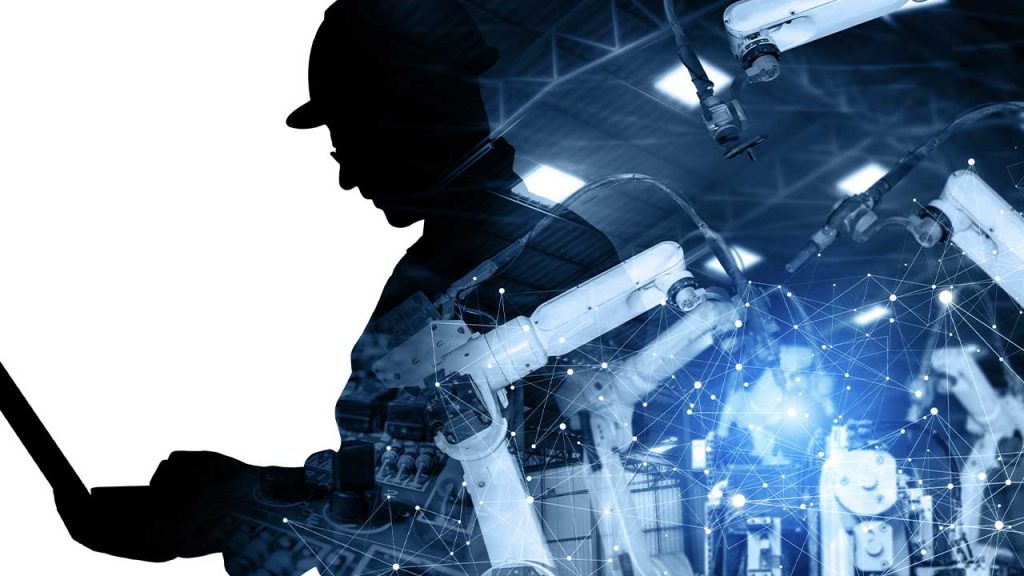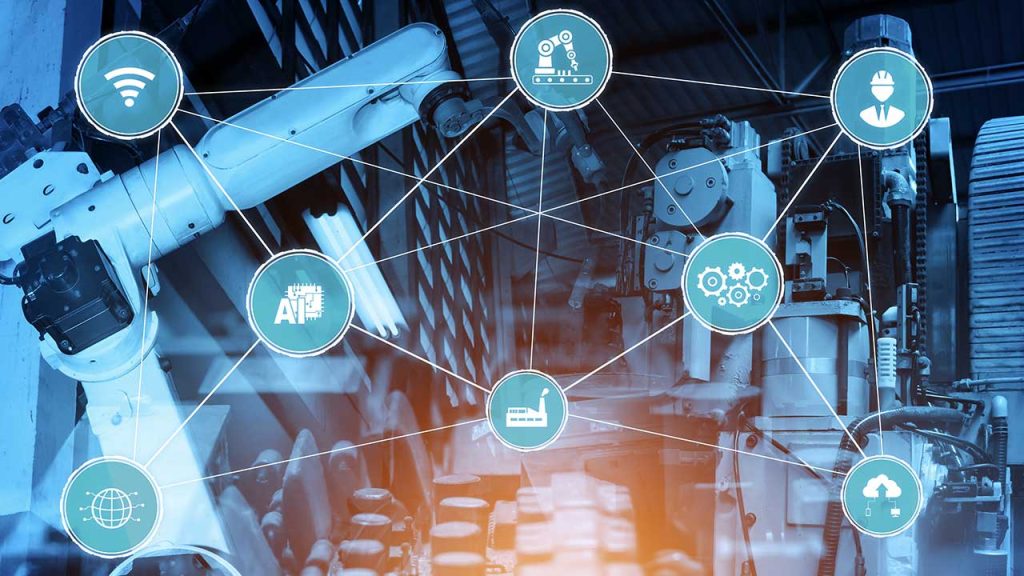A Glimpse Inside Finland’s Innovation Engine
Why the World’s Happiest Country Is Building the Future of Industry
Introduction
I recently spent five days in Finland as part of a press tour organized by Business Finland to see how the country, often regarded as the happiest in the world, enables innovation and international business growth. Three cities, a dozen site visits, dinners with local leaders, and countless conversations later, one thing is clear: Finland is punching far above its weight in industrial innovation and digitalization.
From smart manufacturing and port automation in Tampere, to life sciences and the circular economy in Turku, to future tech like quantum computing and zero-emission trains in Helsinki, Finland is quietly building the kind of ecosystem to which the rest of the world should be paying close attention.
Tampere – A Testbed for Smart Industry & Defense
Tampere: From Industrial Legacy to High-Tech Laboratory
Tampere is a city that knows how to reinvent itself. Once defined by a myriad of water wheels, smokestacks, and steel that created both a textile and paper manufacturing industry for Finland, today Tampere is buzzing with R&D labs, university talent, and companies rewriting the rules of the sector. With more than 100 years of manufacturing experience, Tampere has evolved into Finland’s second-largest urban hub; a place where industrial muscle now meets digital innovation.
Snapshot Insights – During my visit, three stops vividly portrayed this transformation: BHTC Finland, Kalmar, and Saab Finland.
- BHTC: 75% of the group’s innovations now come from Tampere, shaping the future of automotive climate control and HMI.
- Kalmar: At the world’s largest port automation test field, I saw how heavy material handling is going digital and autonomous.
- Saab Finland: From tactical electronic warfare to naval combat software, Tampere has become a strategic hub for global defense innovation.
Takeaway: Tampere is a formidable proving ground where industry, academia, and government join forces to accelerate breakthroughs.
First Stop – BHTC Finland: Driving Human–Machine Innovation
If you’ve ever admired the sleek display inside a BMW Mini or the digital driver workspace in a Scania truck, chances are the team at BHTC Tampere had a hand in it. Buried in the heart of this city sits BHTC Finland, an R&D powerhouse shaping the future of human–machine interfaces (HMI) for some of the world’s biggest automakers.
What struck me first wasn’t just the tech, it was the culture. The team formed back in 2017 with only six engineers, many of whom were veterans of Nokia and Microsoft’s mobile device era, working side-by-side with their German colleagues to prove they could deliver. They did, and then some. Today, BHTC Finland has grown to 45 employees and secured multiple billion-euro program wins for the company. By 2024, three out of four of BHTC Group’s inventions were coming out of Tampere.
But here’s what really caught my attention: their unapologetically open approach to innovation. Failure isn’t punished here: it’s fuel. As one leader told us, “Some of the trials are crazy, but that’s where the best ideas come from.” Engineers are encouraged to experiment, break things, and share knowledge freely, rather than silo it away. That culture has become magnetic and contagious, pulling in top talent from Tampere University, which boasts more than 35,000 students and a steady stream of bright, ambitious engineers.
And it’s not just recruitment. BHTC actively collaborates with the university, treating student projects like long-term job auditions. By the time a student graduates, they’ve often already spent years working inside the company, seamlessly transitioning into full-time roles.
As of 2024, BHTC Finland became part of AUO, a Taiwanese bellwether in Optoelectronics with more than 40,000 employees. Taking on the challenge of integrating into that larger corporate machine is ongoing, but the Tampere team is fighting hard to keep its startup-like spirit alive. Judging by the energy and smiles in the room during our visit, and the pride in their voices as they recounted hard-earned wins, I’d say the BHTC Finland team is succeeding.
This combination of industrial know-how, fearless innovation, and close university ties makes BHTC Finland more than just an R&D center. It’s a case study in how to nurture talent and leverage experience and generational knowledge to catalyze innovation and growth.
Kalmar Visit – Transforming the Future of Cargo Handling from Tampere
In Tampere, we got a close look at Kalmar, a company that has become a backbone of global trade. Their machines — straddle carriers, reach stackers, terminal tractors, forklifts, and container handlers — move the containers, steel, and oversized cargo that keep supply chains flowing.
What sets Kalmar apart is how it combines heavy hardware with services and data. With 70,000 machines in operation, 15,000 of them connected in real time, they’re optimizing performance through predictive maintenance and digital monitoring. The strategy is clear: electrification to cut emissions and automation to boost safety and productivity. From hybrid straddle carriers in France, to service hubs in Germany, to a fully automated port in Los Angeles with 132 driverless machines — the proof points are global.
Now an independent company listed on Nasdaq Helsinki, Kalmar employs 5,300 people and generates €2B in sales across 120 countries. Tampere’s deep talent pool, collaborative industrial clusters, and Finland’s “Move to Green” program (injecting €150M into R&D) give them a unique edge to accelerate automation and electrification.
Kalmar’s approach is pragmatic: diesel options remain where customers demand it, but 40% of sales already fall under their eco portfolio. Their autonomous terminal tractors and straddle carriers are tested in Finland and Sweden under real-world conditions, delivering safety and efficiency that competitors struggle to match. The result is a balanced path toward a fully electric, automated future — built in Finland, deployed worldwide.
Saab Finland:
I’ve been a Volvo guy for years, but I have to say that after this visit, if Saab were still making cars, I would look hard at one for my next purchase. With automobiles far in the rearview mirror, I was fascinated to see how Saab is rewriting the playbook for defense innovation. Instead of sticking to the traditional decade-long procurement cycles that bog down much of the industry, they’re leaning into speed, agility, and software-driven development. The Ukraine conflict has only underscored why this shift matters: today’s battlefield demands rapid updates, tactical deployment, and the kind of operational flexibility that older, project-based models simply can’t deliver.
What stood out is Saab’s push from “projects” to “products.” According to Saab executives, by reducing overspecification and encouraging standardization across allied nations, they’re cutting integration times from years down to months, or even days. That’s a big deal for interoperability and coalition readiness. Denmark and Germany, for example, are already seeing the benefits of this approach.
The Sirius™ passive surveillance system is a great case in point. Compact, energy-agnostic, and network-agnostic, it can be deployed quickly, detect electromagnetic emissions, and remain stealthy in the field. It’s designed to integrate seamlessly with existing platforms without storing sensitive data onboard, a clear sign of how Saab is embedding cybersecurity into its DNA.
Finland plays an outsized role in this story. Saab’s R&D footprint here in Tampere, taps into deep university and research collaborations, fueling product development far beyond the Nordic region. It’s also about people: Saab fosters autonomy, mission-driven values, and high engagement across its teams, which you could feel in the way they spoke about their work.
And while nearly all of Saab Finland’s operations are geared toward exports, at 98%, the company hasn’t lost sight of its domestic role. The bigger picture is clear: Saab is showing how a defense company can adapt to modern threats with speed, flexibility, and solutions that are mission ready.
Turku – Life Sciences Meets Circular Economy
Turku surprised me. Known historically as a maritime hub, it’s now emerging as a leader in both global health and sustainable industry.
- Bayer: With €950M invested in their Finland operation over the past decade, Turku is the backbone of Bayer’s global contraceptive supply chain, reaching over 130 countries.
- Women’s Health Hub: Tackling a long-ignored gap in global R&D, this initiative connects pharma, diagnostics, and researchers to elevate women’s health innovation.
- Smart Chemistry Park: A thriving cluster of startups driving bio- and circular economy solutions ranging from battery recycling to biobased materials.
Takeaway: Turku blends the maritime legacy with health and cleantech, showing how regional ecosystems can reinvent themselves for global relevance.
Bayer Finland: Pharmaceutical Production and Global Reach from Turku
In Turku, Bayer Finland operates one of the company’s key global production and development sites for women’s healthcare. The facility specializes in intrauterine systems (IUS), relying on proprietary polymer technology and highly automated manufacturing processes. Production is tightly regulated, with multiple layers of quality control, machine vision, and statistical checks ensuring consistency at scale. From this site, products are exported to more than 130 countries.
The tour highlighted the integration of advanced automation with pharmaceutical standards, from extrusion and assembly through packaging and logistics. The plant also incorporates energy-efficient HVAC, waste management, and material flow systems designed to reduce environmental impact.
Beyond the technology, the operation plays a role in broader healthcare outcomes, particularly in providing access to contraceptive solutions across diverse markets, including low- and middle-income regions globally.
Bayer Finland illustrates how global pharmaceutical manufacturing combines scientific development, Industry 4.0 innovation, and sustainability practices within a single production ecosystem.
Women’s Health Hub Finland: A Collaborative Push for Change
Women’s health has long been underfunded, with only about one percent of research dollars directed toward female-specific diseases despite women making up half the global population. That imbalance is beginning to shift, and Finland is positioning itself at the forefront of this change.
The newly launched Women’s Health Hub Finland brings together major pharmaceutical and diagnostics companies, researchers, and public sector organizations in a collaborative network. Coordinated by Business Turku, the Hub aims to accelerate innovation and bring new solutions in women’s health to global markets.
Bayer is one of several anchor members of the Hub, but the initiative is clearly a collective effort with representative organizations from academic research, public investment, and industrial expertise all coming together to drive progress.
In a sector now recognized as one of the fastest-growing global markets, Finland’s approach is pragmatic, collaborative, and focused on long-term impact. Women’s Health Hub Finland is still in its early days, but its ambition is clear: to move women’s health out of the margins and into the mainstream of innovation and investment.
Smart Chemistry Hub: Scaling Deep Tech for a Sustainable Future
Smart Chemistry Hub in Raisio, Finland, is more than a lab or office space; it’s a launchpad for deep tech companies transforming the bioeconomy, circular economy, and cleantech. Run by Business Turku, the Hub gives start-ups and SMEs access to pilot halls, specialized labs, and a network of universities, research institutes, and public-sector partners. The goal: turn cutting-edge research into industrial-scale solutions with global reach.
The companies here are tackling some of the world’s biggest sustainability challenges. Fortum Battery Recycling is developing near carbon-neutral ways to recover metals from end-of-life lithium-ion batteries, preparing for the coming wave of e-mobility. FP-Pigments is reinventing pigments for paint, plastics, and paper, replacing titanium dioxide with more sustainable and environmentally friendly alternatives. CH-Bioforce turns agricultural and wood-based side streams into biopolymers and dietary fibers, offering solutions for cosmetics, food, and industrial products.
What makes Smart Chemistry Hub special is the ecosystem it fosters. Finland’s “triple helix” approach, linking public, private, and academic sectors, means ideas don’t just stay in the lab. The Hub provides companies access to infrastructure, funding guidance, and expertise to scale their innovations, proving that sustainability and industrial growth can go hand in hand.
Helsinki/Espoo – Future Tech & Global Gateways
The capital region was the perfect finale to a whirlwind behind-the-scenes tour of what the “Happiest Country in the World” (8 years running) has to offer.
- Aalto University’s Tiny House Shadow: Minimalist design meets circular construction — proof that sustainability is a lifestyle as well as an architectural and engineering challenge.
- VTT: From microbes + AI creating bio-based materials to piloting quantum computing at Micronova, VTT pushes boundaries.
- ABB: At its Center of Excellence, ABB Motion is delivering electrification and automation solutions to power sustainable industry worldwide.
- Alstom: Developing zero-emission trains with fuel cell and battery platforms, positioning Finland at the heart of the future of mobility.
Takeaway: Helsinki/Espoo is Finland’s launchpad for global-scale innovation, where future industries are born.
Shadow: A Tiny House in Finland, Big on Sustainability
On our way to Aalto University in Espoo, we made a quick detour to the Designs for a Cooler Planet exhibition, where Professor Matti Kuittinen’s tiny home, “Shadow,” is on display. It’s a striking example of circular construction, a showcase for sustainable materials, and a window into the peaceful, minimalist Nordic lifestyle.
Matti’s approach turns what most consider waste into building blocks. The structure is framed with recycled steel; insulation comes from repurposed glass; the walls, floors, and surfaces are largely recycled plastics. Even appliances, from the kitchen to the shower, are reused. Carpeting? Made from fishing nets. Nearly everything here carries a story of reuse and ingenuity.
Inside, “Shadow” feels surprisingly spacious. The central room is designed for focus and meditation, a sanctuary after long journeys. Fold-out tables and multifunctional furniture transform the space for work, family, or leisure. Upstairs, Matti’s son enjoys a cozy capsule-like nook, while the home’s acoustic treatments create calm and privacy.
Black walls and interiors set a dramatic, protective tone. In Finland’s deep winters, the dark surfaces feel warm and nest-like, a deliberate choice for both comfort and aesthetics. Even the roof experiments with recycled tires, demonstrating that sustainability can be functional, artistic, and experimental.
Matti’s vision is both practical and philosophical: downsizing, reusing, and appreciating what’s essential. The home is fully connected to municipal electricity and water, yet its low energy footprint and circular construction principles show how modern living can leave a lighter mark on the planet.
This tiny house isn’t just a prototype—it’s a glimpse into a different way of living: thoughtful, resourceful, and entirely human-centered.
From Lab to Market: VTT’s Global Innovation Engine
VTT Technical Research Centre of Finland sits right at the intersection of early-stage innovation and real-world deployment. Their entire mission is about closing the gap between lab prototypes and products that can scale, whether that’s in semiconductors, advanced materials, biotech, electrification, or energy systems. They’re not just a research lab; they’re an innovation engine. Companies, from scrappy startups to global OEMs, come here to take bold ideas off the whiteboard and turn them into working hardware, pilot production runs, or even small-batch manufacturing.
Their work spans a wide range of emerging technologies: next-generation batteries, AI and digital logistics, electrified transport, defense systems, space applications, and even biotech-based food solutions. They’re especially strong in semiconductor development, quantum electronics, and the broader battery value chain — often blending physical labs with advanced digital modeling to accelerate design cycles and improve reliability.
One of the most impressive pieces of the puzzle is their work in quantum computing. On site, I saw IQM’s quantum system firsthand — part of a growing ecosystem supported by more than €100 million in government and private investment. The new cleanroom and R&D facilities are being built to host semiconductor and quantum companies from around the world, with a focus on pilot-scale manufacturing and rapid prototyping. IQM’s platform is already tackling complex problems in material science, defense simulations, and logistics optimization, and companies can access the system remotely through the cloud. What really stood out was how VTT commercializes its research: spinning out startups, investing intellectual property into young companies, and helping larger players experiment before committing major capital — all while building a collaborative environment where global industry and academia converge.
VTT’s reach is truly international. They collaborate with partners across Europe, the Americas, and Asia, weaving regulatory standards, market demands, and technical requirements directly into their development process. Beyond research, they offer pilot production, testing, and demonstration capabilities — the critical infrastructure companies need to validate, refine, and scale new technologies.
In the end, VTT is more than a research institute — it’s a launchpad. They bring together researchers, industrial partners, policymakers, and end users to accelerate the deployment of technologies that matter, from green transportation and digital supply chains to defense, space, and quantum computing. It’s where future-ready ideas find their way into the real world.
Next-Gen Industrial Intelligence: A Look Inside ABB
ABB is a truly global powerhouse in electrification, robotics, automation, and motion technologies. With presence in over 100 countries and a strong focus on digitalization and sustainability, the company operates across multiple industries—from industrial manufacturing to utilities and transportation. Their strategy is clearly centered on combining cutting-edge technology with deep industry expertise, enabling customers to improve efficiency, reliability, and environmental impact. The organization’s scale and integrated approach make it clear why ABB is a leader in industrial innovation.
The factory tour and info session really highlighted how much motor drive systems have evolved—both in size and capability. Modern variable frequency drives are compact yet powerful, and they play a critical role everywhere from industrial systems to electric vehicles. The scale of the operation is impressive: they handle both standalone products and complex systems for industrial applications, with a focus on efficiency, quality, and sustainability.
Operations are highly digital and tightly integrated with R&D. While leveraging global sources for components, final assembly, testing, and logistics happen on-site. The lab capabilities are top-tier, with capabilities for environmental testing, accelerated life testing, electron microscopy, and EDAX/X-ray analysis, and even AI-driven predictive maintenance. Reliability is crucial here, as these products support critical infrastructure worldwide.
Energy efficiency is a major theme. About 45% of electricity goes into motors, with only a quarter of those currently using drives—so the opportunity for impact is huge. The factory itself is CO2 net zero, and the energy savings potential across motor-driven systems is enormous.
Overall, the session really underscored the combination of innovation, digitalization, and sustainability. From design to assembly to long-term reliability, every step is optimized. It was a strong reminder of how much goes into products we often take for granted, and why these drives represent both technical sophistication and strategic market opportunity.
Final Stop – Alstom: Driving Innovation Across Global Rail Networks
Alstom, a century-old global leader in rail transportation, continues to innovate across every facet of the railway industry, from trams to high-speed trains reaching 300 km/h. With a footprint spanning Europe, the Americas, Asia, and beyond, Alstom serves over 100 million passengers daily on more than 150,000 locomotives. Following its acquisition of Bombardier, Alstom strengthened its presence in Europe and the Americas, maintaining its position as the world’s second-largest rail manufacturer.
The Finland engineering center, established in 1995 as a spinoff from ABB, plays a critical role in Alstom’s global software development. While Finland represents a smaller domestic railway market, its team delivers solutions worldwide, including mainline rail, metros, airport transport systems, and specialized mining trains. The centerpiece of their work is the EBI Screen 2000, a modular signaling, and control system for trains designed with forward-looking architecture. Its scalable, cyber-secure framework allows integration with a wide range of signaling systems and rolling stock, enabling operators to manage schedules, track conditions, and operational safety in real time.
Alstom’s Finland team emphasizes innovation, efficiency, and global collaboration. Despite its small size, the team has a massive impact worldwide, supporting over 106 active installations and managing trains across 7,800 kilometers of track daily. Their approach leverages high-end cybersecurity and modular software to maximize efficiency, safety, and scalability. In specialized markets like mining, Alstom’s software has improved operational efficiency by up to 60%, demonstrating the value of advanced control systems for high-stakes logistics.
Looking ahead, Alstom continues to explore cutting-edge technologies, including ERTMS Level 3 systems, high-speed rail, and even conceptual hyperloop integration, while maintaining a focus on sustainability, safety, and human-centered design. With Finland as a hub of forward-thinking engineering talent, Alstom is well-positioned to lead the next era of rail innovation globally.
Cross-Cutting Themes
Across every stop, four themes kept surfacing:
- Collaboration — universities, government, and business working in sync.
- Sustainability by design — not bolted on but baked into strategy.
- Trust & openness — a cultural edge that accelerates partnership and innovation.
- Wellbeing as a catalyst — the world’s happiest country channeling quality of life into creativity, collaboration, and bold ideas.
Conclusion
Finland may be small in population, but it’s large in ambition. For global leaders in IIoT, OT cybersecurity, manufacturing, or sustainability, there’s a lot to learn from this ecosystem, and plenty of reasons to engage. And perhaps it’s no coincidence that the world’s happiest country is also one of its most innovative: a culture grounded in trust, wellbeing, and shared purpose creates fertile ground for collaboration and bold ideas.
As I left Helsinki, I couldn’t shake one thought: what Finland is building isn’t just for Finland. It’s a model for how industrial innovation can and should be done everywhere.
About the author
 This article was written by Greg Orloff, Industry Executive, IIoT World. Greg previously served as the CEO of Tangent Company, inventor of the Watercycle™, the only commercial residential direct potable reuse system in the country.
This article was written by Greg Orloff, Industry Executive, IIoT World. Greg previously served as the CEO of Tangent Company, inventor of the Watercycle™, the only commercial residential direct potable reuse system in the country.


